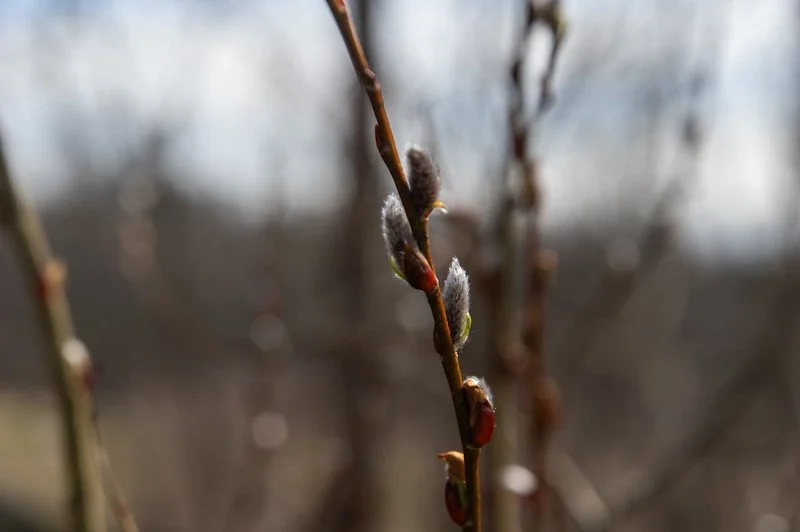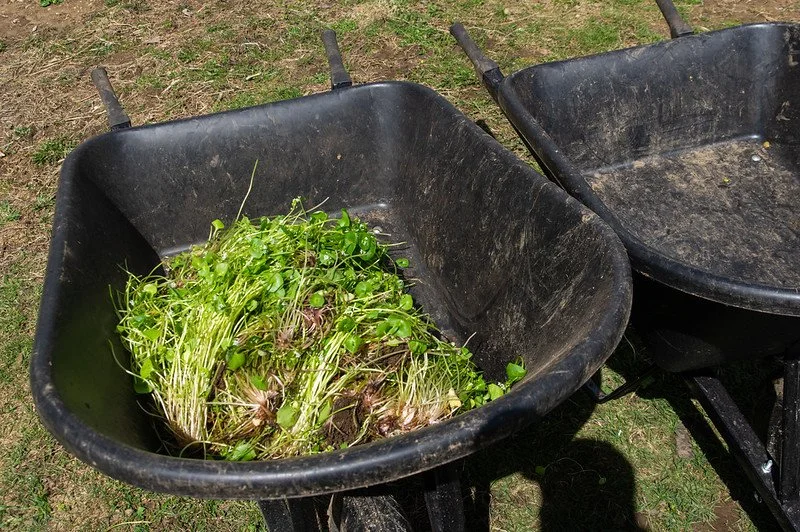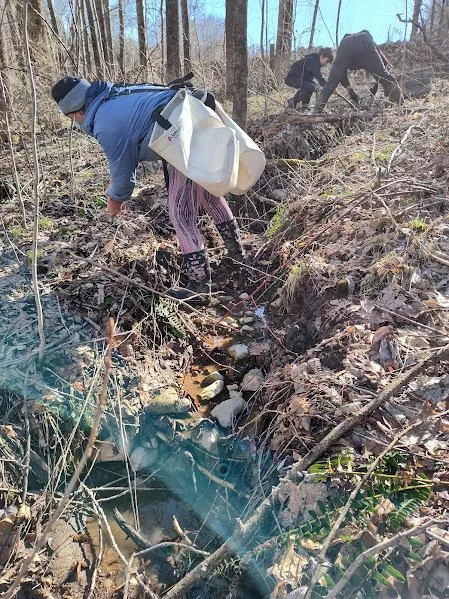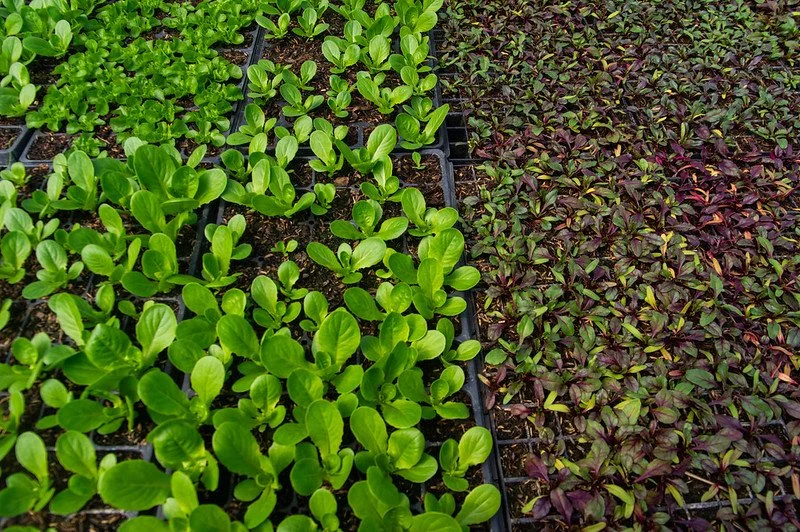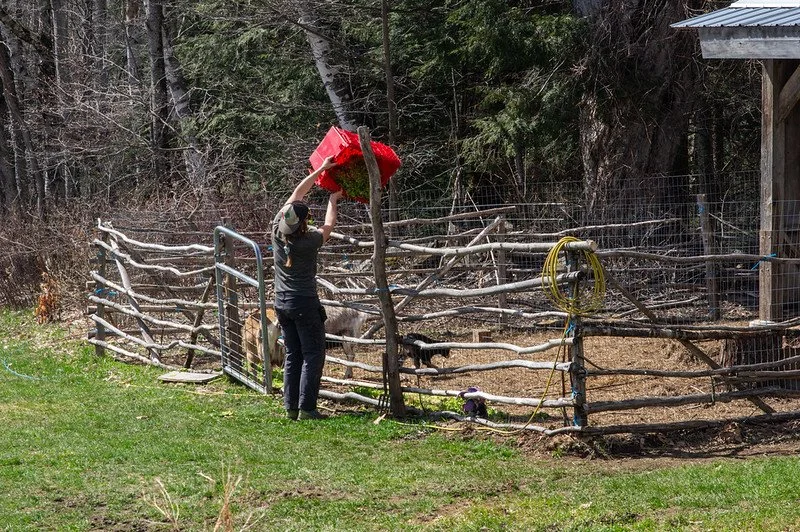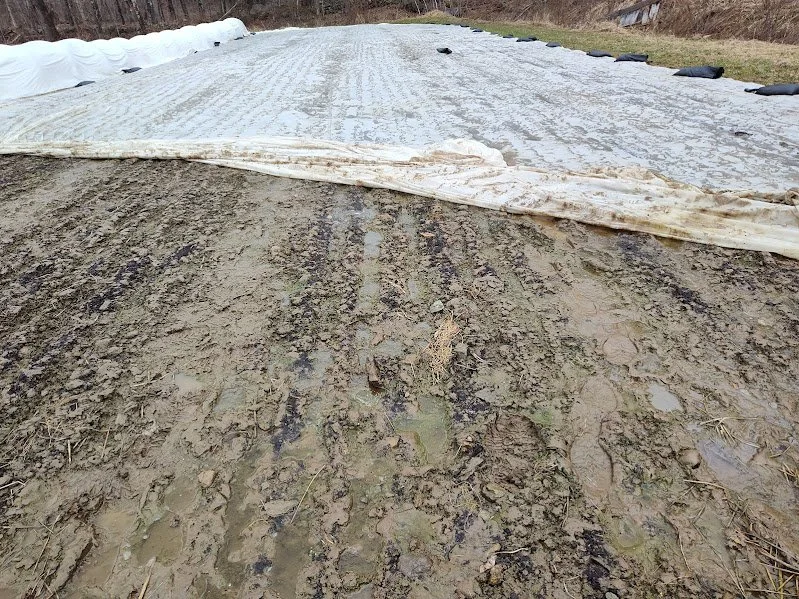8th Week of the Spring CSA season: Week of April 24th
so many plants! photo by Adam Ford
This Week’s Availability
This week we will have garlic, fresh red radishes, yellow potatoes, carrots, beets, daikon radishes, rutabaga, yellow onions, sweet potatoes, mesclun mix, baby kale, green curly kale, kale rapini*, spinach, pea shoots, and baby lettuce.
*What is kale rapini? The flowering kale this time of year is a seasonal treat only available for a short window. When the overwintered green curly kale starts trying to set seed, it creates these tender, delicious flower buds, similar to broccoli raab. We harvest and eat the entire plant: stems, leaves, and flowering top. It is delicious sauteed with garlic and olive oil, and we eat it in some fashion at every meal this time of year.
kale rapini bunch accidentally forgotten in the chickweed, photo by Adam Ford
thank goodness for a plant tag printer! photo by Adam Ford
first round of flowers for sale, photo by Adam Ford
Farm News
Let’s talk about certified organic produce, because I read this article this week (about high levels of chemical contaminants in some foods) and it bummed me out. It bummed me out for so many reasons, some of them are:
Pesticide residues were found on some certified organic products that are not allowed within organic production.
Most of the food consumed by people in this country is non-organic, which relies heavily on intense chemicals. I believe everyone should have access to safe food, not just if you turn your monthly home budget into a game of Tetris to prioritize healthy eating.
While the majority of the food our family eats is certified organic, we are not dogmatic… we let our kids eat school lunch, we eat food from restaurants sometimes, we eat food at other people’s houses, etc. We also rely on those certification labels at the grocery store when we shop for things we don’t produce ourselves or get from other area farms. So we are also exposed to these potentially high levels of chemicals despite knowing how harmful they can be.
What can be done about this? Well the good news, is that you are already prioritizing safe food for yourself by eating veggies from a local certified organic farm. It’s unclear how some of the organic produce in grocery stores became contaminated with pesticides (was it in production, was it in transit from being shipped with conventional produce, etc), but by buying locally, you can rule out contamination in transit: If you pick up at the farm, the veggies move about 20 feet from the wash station to the display cooler. If you pick up a bag in town, those veggies move in a vehicle that has never transported conventional produce to a single destination for you to snag. You can also rule out contamination at the production source: We only use organically approved interventions as a last resort, and even these we have been phasing out as we improve soil health. And almost all crops we grow just do not need any type of organically approved spray whatsoever. Other things you can do are to are to buy certified organic products when you have to buy things that aren’t from local sources. Consumers do shift market forces over time, and if more of the population is signaling that we want chemical-free food hopefully more producers will shift that direction. (There was a new rule added to the organic certification process on the national level this year that addresses potential contamination points in transit.) We can also demand that our legislators start writing legislation that subsidizes safe, healthy certified organic food instead of conventional commodity crops that are good for no one’s health except besides maybe large agri-business corporations and chemical companies. We can also pressure our legislators to have our EPA regulations match more stringent chemical safety standards of other countries. We don’t have to accept a dominant food system that is extractive to the earth, exploitative of the farm workers, and is unhealthy for eaters.
Meanwhile in actual ESF farming news, this week we planted about 800 feet of willow cuttings in a ditch that has been eroding through the woods below our growing fields. Over a decade ago as we began building farm infrastructure, runoff from the roofs and high tunnels was diverted into existing ditches on the edges of the fields. We noticed that these ditches weren’t well designed to minimize erosion, so we planted them densely with willow cuttings to stabilize that hillside water flow. Over the years, we were ultimately able to establish ditches that slowed water and eliminated erosion as water moved down the field. At the same time, we began to observe intense downpours that would create erosion downstream in the forest. So we finally took the time this spring to cut A TON of willow cuttings and stick them in the length of the drainage zone in the woods from below our growing field all the way down to the train tracks. It will be neat to see how it improves that zone over the next decade. It’s important to us to make sure that the way we grow veggies don’t have unintended downstream consequences, so it feels really good to prioritize this project.
This next week is one of the busiest weeks of the spring, and also my favorite: We will be planting out the first beds of tomatoes in the tunnel, along smaller, faster growing crops like head lettuce and cilantro around the tomatoes. We will try to get some of the earliest outdoor transplants in the ground like sugar snap peas and alliums, so we can make more room in the propagation house for the giant planting we do this week for all the thousands of plants we start for pre-ordered plants. We will be seeding and repotting SO MANY plants this week for other people’s gardens. It’s such a fun honor to start plants for other gardens!
Have a great week,
-ESF Team: Ryan, Kara, K2, Cindy, Galen, Katie, Taylor, Vanessa, and Bryan (and Sky and Soraya)
Weekly Recipe
Lilac bud, photo by Adam Ford
willow bud, photo by Adam Ford
narcissus bud, photo by Adam Ford
flower on locust cutting, photo by Adam Ford
moonflower sprout, photo by Adam Ford
Katie and Vanessa removing old claytonia plants from the tunnel to make way for tomato planting, photo by Adam Ford
filling up wheelbarrows of claytonia for the compost, photo by Adam Ford
garlic looking good, photo by Adam Ford
wholesale bag stickers, photo by Adam Ford
bars of soap on stakes in the blueberry patch did an excellent job of keeping deer from munching the tender branches, photo by Adam Ford
some great art decorating the packing area, photo by Adam Ford
seedlings coming up in the tunnel, photo by Adam Ford
Vanessa, Katie, and Sky planted hundreds of willows along an erosion corridor, photo by Ryan
those sticks sticking out of the ground are the willow cuttings that will root and hold that ditch in place, photo by Ryan
brassica flower, photo by Adam Ford
snowdrops, photo by Adam Ford
head lettuce and beets, photo by Adam Ford
rows of flowering greens we will remove for basil and peppers, photo by Adam Ford
and also sharing bins of spent greens with the goats, photo by Adam Ford
overwintered onions looking great, photo by Adam Ford
rainbow chard, photo by Adam Ford
any work place should have a disco ball, photo by Adam Ford
Sky taking Sophie for a stroll… before too long she will be too heavy for the kids to walk around with in their arms…, photo by Adam Ford
sometimes you can find art in surprise places around here, photo by Adam Ford
uncovered overwintered onions, photo by Adam Ford
pic taken on April 12th after the snow melted, seeded March 10th… it’s hard to see, but tiny seedlings somehow emerged and grew in the saturated soil, photo by Ryan
piles upon piles of willows to plant, photo by Ryan
these are well established willows we planted in the ditches around the fields over a decade ago, stabilizing the soil and slowing the flow of water, photo by Ryan






